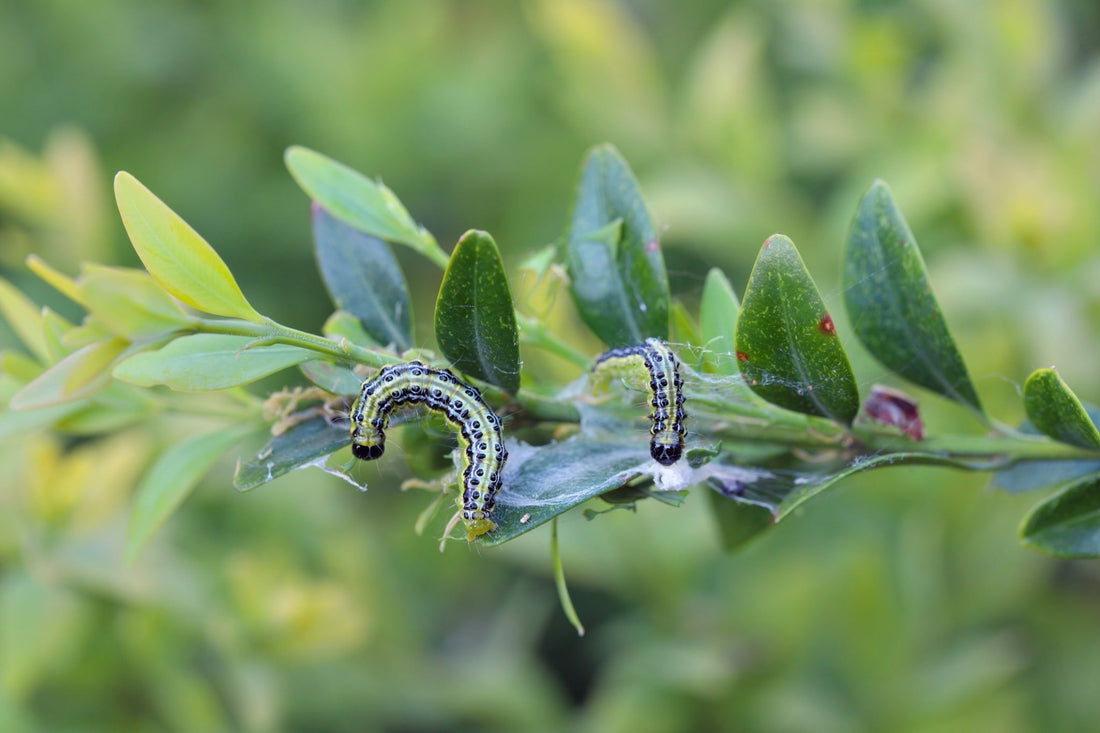Battle of the Boxwoods: Round Two with the Box Tree Moth
Hello fellow green thumbs and lovers of lush landscapes! Guess what? The box tree moth has decided to grace us with its presence once again. Yes, our leafy friends in Georgina, Ontario, are experiencing the second round of this unsolicited sequel. But don’t start waving the white flag just yet! Instead, let’s gear up for a proactive approach to keep our beloved boxwoods looking their best.
First things first, don’t panic! Yes, those tiny invaders are back, but we’ve got this. The key is to be vigilant, proactive, and armed with a bit of humour (and BTK, but more on that later).

Visual Check-Ups: The Doctor Will See You Now
Alright, let's start with the basics. Think of your boxwoods as needing their regular check-up. Every now and then, take a leisurely stroll around your garden with a nice cup of coffee (or something stronger if that’s your thing). Get up close and personal with your boxwoods—inspect the leaves and stems for any signs of trouble. Look for caterpillars, webbing, and those telltale holes that say, “Hey, we’ve got squatters!”
If you find anything suspicious, don’t freak out. Instead, take a deep breath and move on to the next step.
The Natural Male Moth Trap: The Bachelor Pad They Never Wanted
Imagine setting up a little bachelor pad that male moths can’t resist but never quite make it out of. That’s right, we’re talking about the natural male moth trap. These handy contraptions lure the male moths in, preventing them from having romantic rendezvous with the females. Fewer dates mean fewer eggs, and fewer eggs mean fewer caterpillars munching on your precious boxwoods.
Hang these traps around your garden, and watch as the males flock to their unexpected doom. It’s kind of satisfying in a slightly twisted, garden-protecting way.

BTK: The Organic Enforcer
Now, if you do spot caterpillars, it’s time to bring in the big guns—Bacillus thuringiensis var. kurstaki (BTK). This naturally occurring bacteria is like the ultimate organic enforcer. When caterpillars ingest BTK, it disrupts their digestive system, leading to a not-so-happy ending for them. And the best part? It’s safe for humans, pets, and beneficial insects.
Apply BTK to your boxwoods, following the instructions on the label. Think of it as giving your plants a superhero serum that makes them caterpillar-proof.
Keep Calm and Garden On
In the grand scheme of things, the box tree moth is just another challenge in the gardening world. With a bit of vigilance, some clever traps, and the power of BTK, your boxwoods will stay lush and lovely. So, let’s roll up our sleeves, put on our gardening gloves, and show those moths who’s boss.

Remember, gardening is supposed to be fun. Embrace the quirks, laugh at the challenges, and take pride in your beautiful, resilient garden. Happy gardening, everyone!
Happy gardening! 🌿✨
Shannon, the Garden Girl
Shannon, the Garden Girl, shows Box Tree Moth damage on Boxwood. She explains the life cycle of the pest as well as natural pest management controls.




